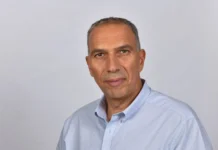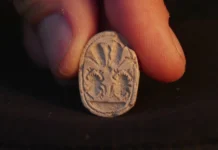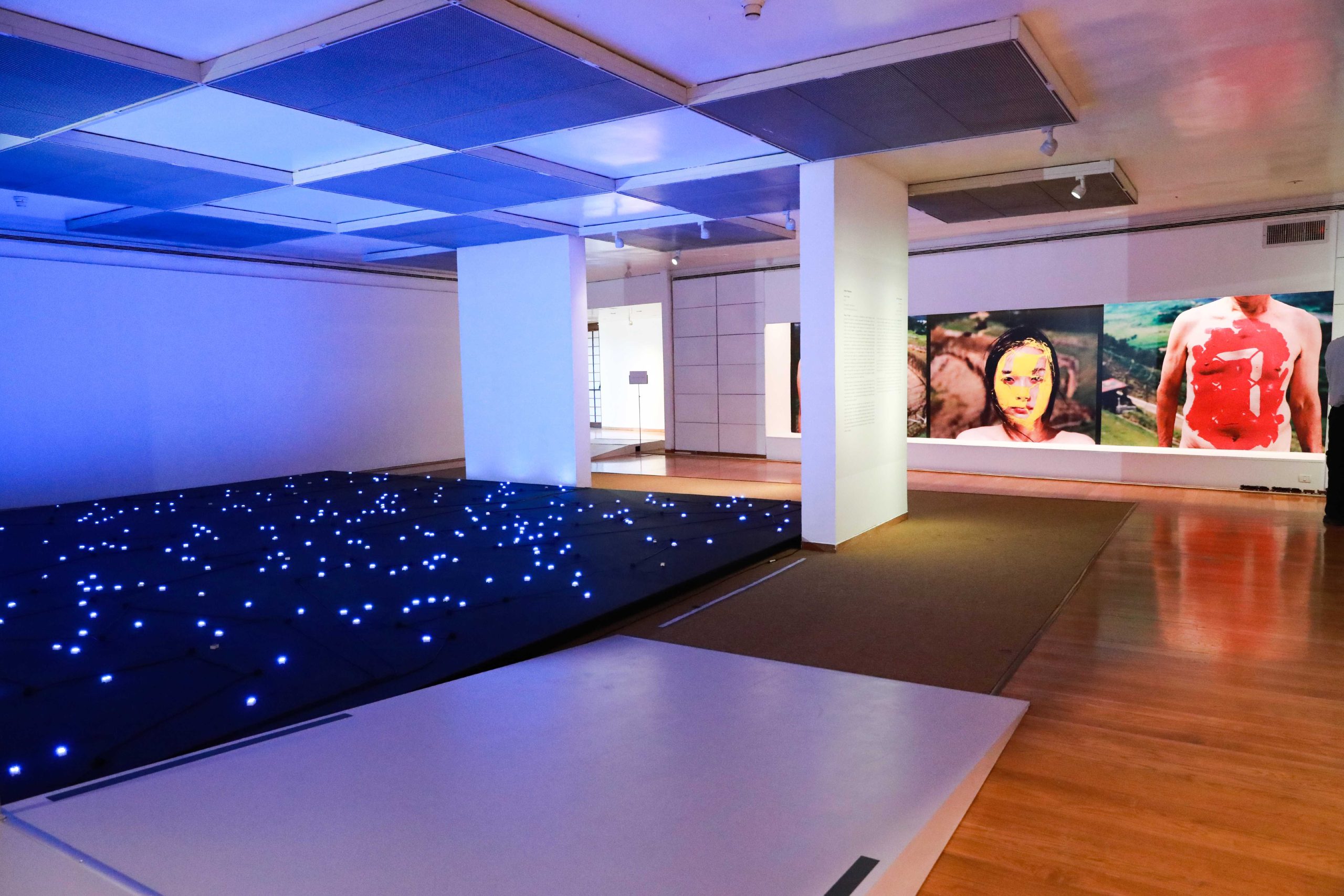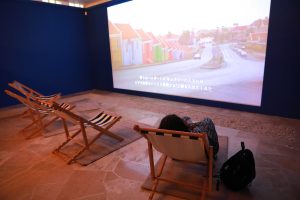As Israel marks the occasion of 70 years of diplomatic relations with Japan, the Tikotin Museum of the Haifa Museums, the only museum of its type in the Middle East dedicated to preserving and highlighting Japanese art, is launching a new exhibit entitled “Time Tunnel- Japan and the Jews.”
This one-of-a-kind exhibit displays the work of five leading Japanese artists as it relates to Jewish history, with a specific focus on the Holocaust. The Japanese artwork relating to the Jews focuses on themes of salvation in the face of that intended destruction.
As the first presentation of its type in Israel or the world to focus on these themes, the exhibit, which launched September 11, is heavily inspired by the well-recorded humanitarian actions of Chuine Sugihara, a Japanese diplomat based in Lithuania who issued thousands of transit visas for European Jews to Japan which has been credited with saving over 6,000 people during the height of the Holocaust.
Dr. Etty Glass Gissis, Curator of the Tikotin Museum explained “This exhibit is intended to convey a universal message of humanity, tolerance and an understanding that despite differences in culture, behavior and history, through art contemporary Japanese artists are able to demonstrate an attachment and even passion for the Jewish narrative.”
The central piece in the exhibition is a work developed by world-renown artist Tatsuo Miyajima (b.1957) entitled “Sea of Time”. It welcomed contributions from over 300 people, mainly survivors saved by Sugihara and their family members, to convey a message of the power of tolerance and mutual understanding as human values, providing a visual counter-balance to the hatred of the other that motivated Nazism.
Situated over a 50 square meter space, 300 lights feature the individual perspectives provided by people from across the Israeli demographic, as well as some Jews from around the world, relating to the theme of humanism as demonstrated by Sugihara.
In another installation also created by Maiyajima entitled “Train to the Shoah,” the artist also relies on his trademark use of LED lights bearing numbers that travel around the gallery to provide a stark visual of humanism.

Other elements of the exhibition include displays in lights and shadows of archival photographs taken by Japanese locals who encountered the Jewish refugees fleeing the Nazis. The photos, provided courtesy of the Tokyo Museum of Photographic Art , were captured by the Tampei Photography Club, a group of six photographers which travelled from Osaka to Kobe where the Jewish refugees had arrived in February of 1941. Each photo is combined with a tanka poem (a short poem with 31 syllables) written through the lens of a 10-year-old girl encountering the Jews for the first time, composed by Japanese poet Hiroko Yamagata.
Yotam Yakir, CEO of the Haifa Museums said, “It’s a source of excitement and pride to see this exhibition launching as this is both a tremendous artistic achievement but no less so an educational and humanitarian one. The events of the Holocaust contain universal lessons that deserve understanding by all cultures and peoples and we are hopeful that through the lens of Japanese art we will all be offered a new perspective on both the tragedy and heroism that defines this period and the dramatic, and often untold story of Japan and the Jews.”
The exhibit concludes with a focus going beyond the Holocaust narrative, wherein the growing relationship between Japan and the Jews is reflected through artistic journeys, providing differing perspectives related to the overall theme of the exhibit.
The exhibition, whose development was made possible through support of donors in Israel and around the world, is now open to the public. The Tikotin Museum is located on the slopes of the Carmel Mountain in Haifa. The museum’s original collection of Japanese art belonged to Felix Tikotin, a Dutch Jewish collector. He and his collection survived the Holocaust, after which he decided it should be moved to Israel where it later served as the original basis for the Museum which now bears his name.
More information can be found at https://www.tmja.org.il/eng




























